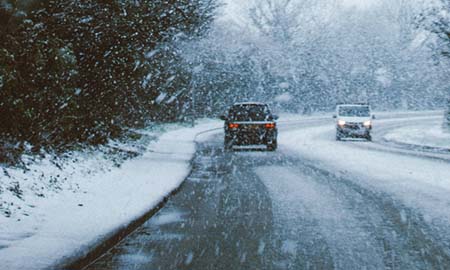Winter is more than coming, it’s here and it’s going to be the usual round of freezing rain and cold snaps. The winter conditions may not be as bad here in Northampton as they are in some parts of the UK, but that won’t be much comfort if you find yourself with car problems one frozen morning.
It’s bad enough getting up in the dark and having to scrape the ice of the car for work without also finding your car won’t start. So here are 5 quick and easy tips that will help keep you moving during a cold snap.
- Don’t leave the service until spring. If your service is due, get it done! Even if it isn’t we suggest a winter check-up. One of the most common contributors to problems with your car is a lack of general maintenance. When you have a service not only will we bring everything up to scratch, but it is also an opportunity for us to spot any potential issues building up. Getting a Winter service greatly increases the reliability and safety of your car.
- Don’t gamble on your tyres. The bottom line on tyres is that when there is ice and snow is around, they are the most important safety feature on your car. Braking, steering and control of the car are all reliant on good tread and the right tyres. Do a depth test (they should have between 1.5mm and 3mm depth minimum – but for safety in winter, we suggest you don’t let them drop below 2.5 – 3mm) and if they look close it’s best to change them. Even if the tread is OK, check the alignment because it can have a huge effect on your control. If you get any of the following symptoms when driving, give us a call because your alignment may be off.
- Your tyres ‘squeal’ sometimes when cornering
- They show uneven wear when you do the depth check
- Your car pulls to one side
- You get ‘bobbling’ and vibration or your steering wheel is not straight
- Don’t leave without plenty of fuel. It’s not good for your car to be running on a low tank for lots of reasons but we all tend to ignore the amber petrol warning light now and again. In winter it could be a really big mistake though. Remember in the cold weather there is more chance of a traffic jam because of increased cars on the road and bad weather conditions. You could get stranded because of snowfall and the number of minor accidents also increases. On top of which, the slow, high gear, driving needed for bad conditions uses more fuel. On a cold day, the last thing you need is to run out of fuel and have no heater. Always keep at least ¼ of a tank or more in your car.
- Make sure you have anti-freeze screen wash and put new wipers on if you need them. Wipers will decay naturally over time, more so in the winter. If they are worn you could have problems with visibility. Check for nicks, tears, and non-contact points with the windscreen. Anti-freeze screenwash is a help, but it won’t be much use without good wipers.
- Don’t rush it in the morning and have a routine. When the weather is cold you need to add a few minutes to your journey to prepare your car. Clean off the outside thoroughly, including the roof. If you have ever had a blanket of frozen snow slip onto your windscreen when you stop, you will know why the roof needs to be done. Turn off everything electrical before you try to start the car. In winter your battery will be less efficient, so extra loading is not a good idea. Give it a little bit of fuel to get it going and, once it is going, resist the urge to over-rev the engine. If it doesn’t start the first time don’t continually turn the engine over, it will only run down the battery. Remember, if you have an older diesel engine you may need to wait for the pre-heat light to go out.
You can trust the forecast to predict a cold spell and take precautions with your car when they say bad weather is coming, or you can have your car ready for it just in case.
Bearing in mind how reliable the weather forecast can be, I would go with the second option.
